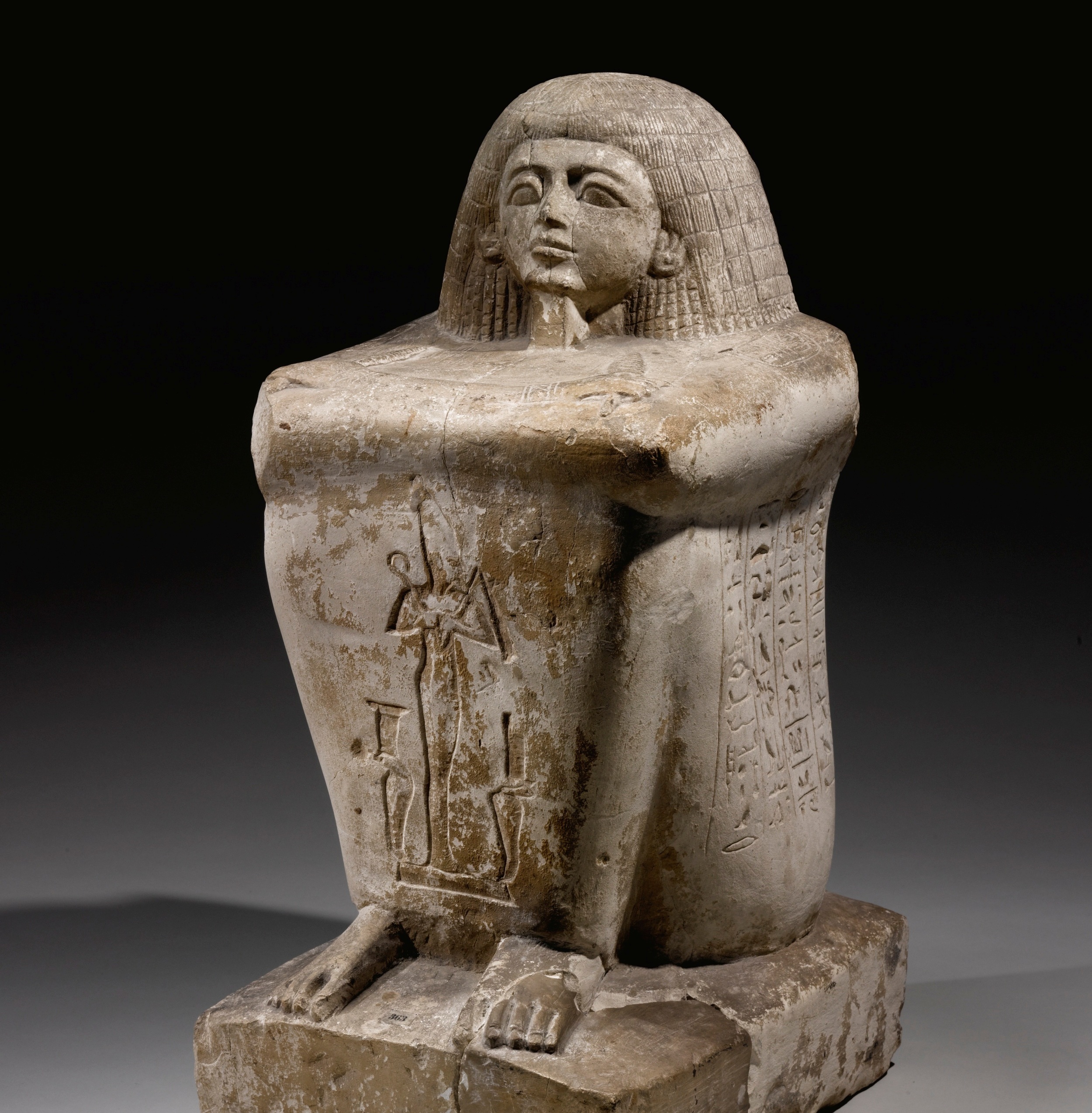You can't blame someone for wanting to look their best for eternity.
Whatever they looked like, those who could afford to have a memorial statue carved for themselves, were pleased to have their sculptors 'work a little magic'. Physical blemishes could be sanded away, and whatever they actually looked like, they could be now shown as forever healthy and good looking. However this practice of reflecting an ideal image often had the effect that everyone looked kind of the same.
And that is why I love this statue of Karo, the transport official. Even after 3,100 years, Karo's distinctive features make him stand out from the crowd.
This type of statue is known as a block statue, which became the statue of choice for placing in temples from the New Kingdom on.
Block statues feature a man squatting with his knees drawn up to his chest and his arms folded on top his knees. The figure is usually wearing a large clock that covers almost the entire body, reducing it to a simple block-like shape. The large blank surfaces created offered maximum space for inscriptions, while the minimal details overall concentrated the viewer's attention on the statue's face.
Having your statue placed in a temple meant that your ka (spiritual life force) was able to share in the regular food offerings given to the gods of the temple. There was also considerable brag value; to hold valuable space in the temple was a great mark of prestige, expressing the high status of the owner.
In this statue, the front of Karo's cloak is carved in sunken relief, with Osiris, god of the Underworld, flanked by his sisters, Nephthys and Isis. These two women magically resurrected the murdered Osiris.
An inscription on the back reads, "An offering the king gives to Osiris, giving air to my nose, that my ba (unique personality) may live, for the ka of Karo, the transport official."
Karo lived during the reign of Ramesses III, around 1,170 B.C., and clearly instructed his sculptors to "tell it like it is". And that makes Karo's statue one of my all-time favourites.

